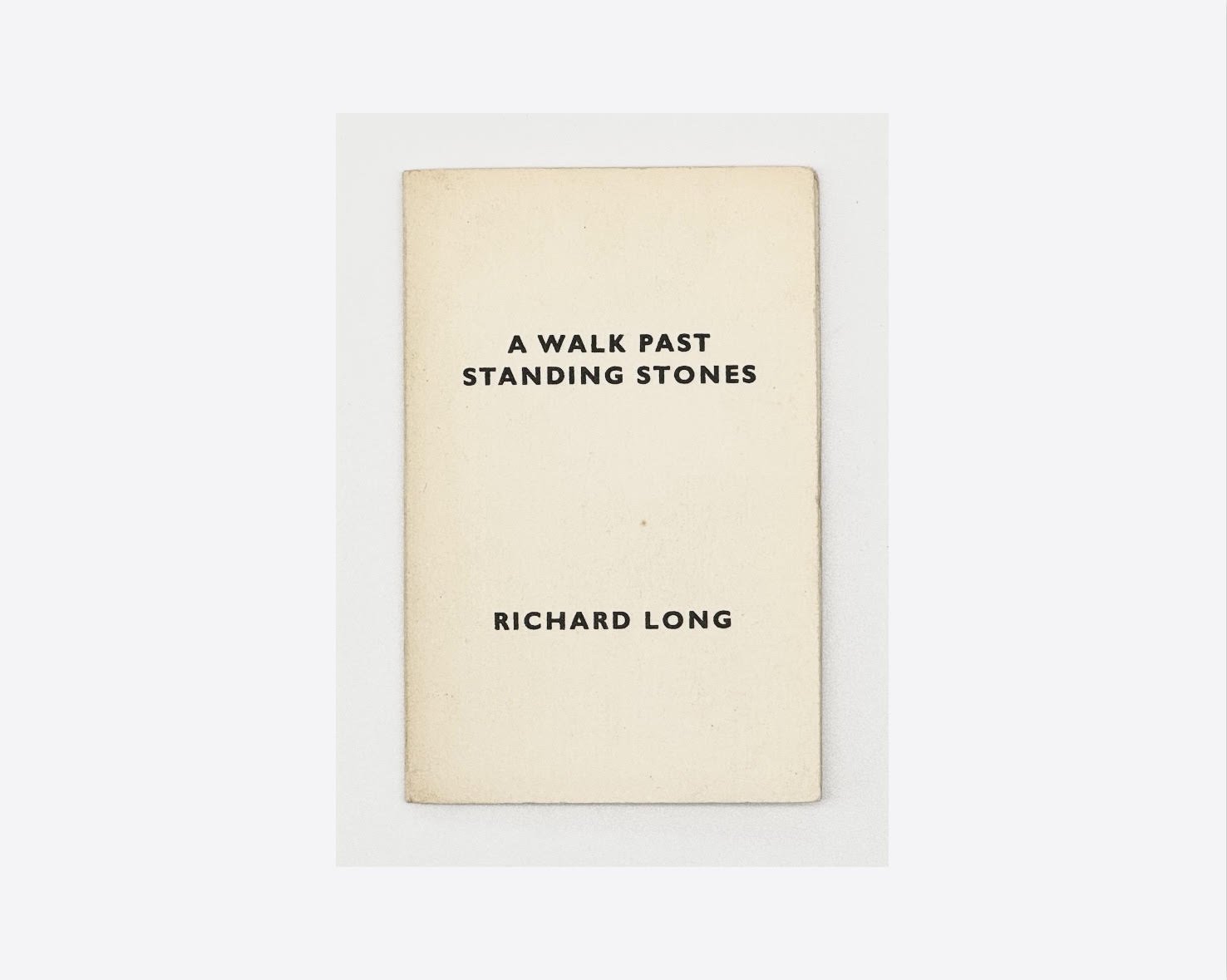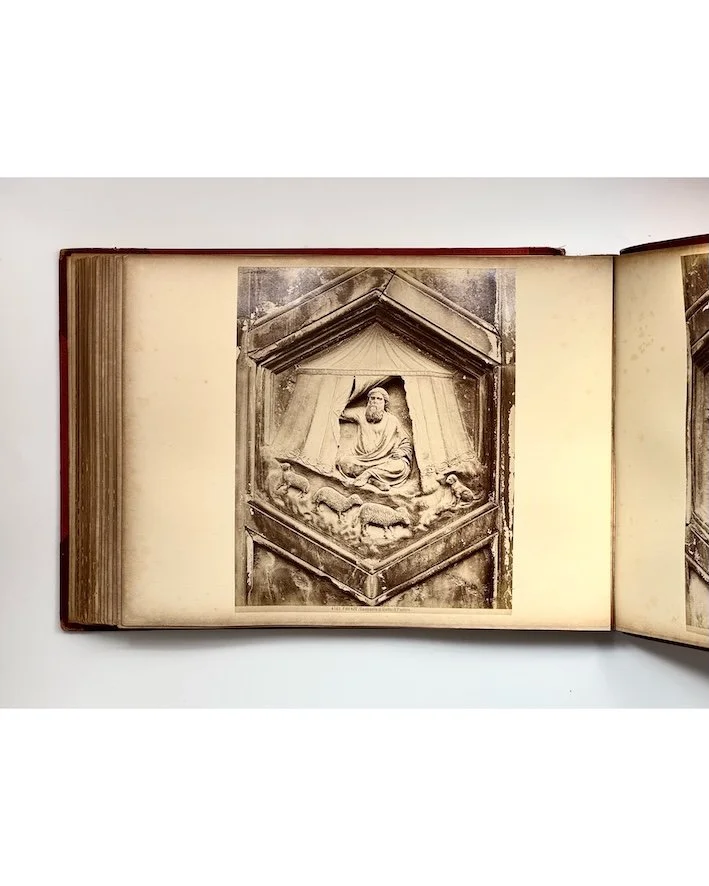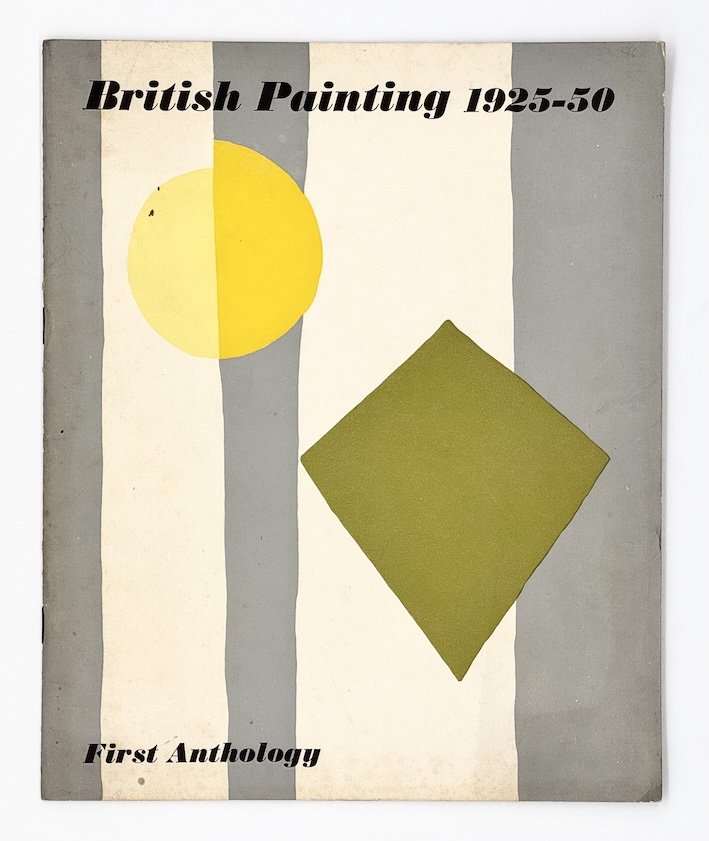 Image 1 of
Image 1 of


Richard Long, A day's walk past the standing stones of Penwith Peninsula, Cornwall, 1978
Artist: Richard Long
Title: A day's walk past the standing stones of Penwith Peninsula, Cornwall, 1978
Publisher and date: Coracle Press for Anthony d’Offay
Publication date: 1980
Format: 10-panel leporello in printed wove card wrappers with nine tipped-in images on coated stock of standing stones
Condition: Very Good
Collections: Yale Centre for British Art; Victoria & Albert Museum, London; among others
Richard Long’s artist’s book, A Walk Past Standing Stones, documents a walk taken by the artist in 1978 past the standing stones of the Penwith Peninsula in Cornwall. The book includes nine monochrome images from photographs taken by Long of nine standing stones: The Pipers 1 & 2 (named from a legend about two pipers who were turned to stone for playing music on the Sabbath) Kerris, Tresvennack, Drift, the Blind Fiddler (also apparently named from a legend of a fiddler turned to stone for playing on the Sabbath), Boscawen-Un (a circle of 19 stones near St Buryan), Boswens (near St Just in West Penwith) and Beersheba (near St Ives, also known as The Longstone). Published in an edition of 1000 in 1980 by Coracle Press for Anthony d’Offay Gallery.
In 1967 whilst still a student at St Martin’s School of Art, Richard Long challenged the notion of what sculpture could be with his pioneering work, A Line Made by Walking. Long's art explores themes of time, space, and distance through the medium of walking. He has expanded his walks to remote regions globally, including an Alps walk documented for the groundbreaking exhibition, When Attitude Becomes Form, at Kunsthalle Bern in 1969. Post-1969, his art extended to creating sculptures in diverse landscapes worldwide. Long started creating distinct mud works in the 1980s, using handprints on walls, and large sculptures from various materials like slate, driftwood, footprints, or stone. His work reflects his experiences in different environments such as mountains, deserts, shorelines, grasslands, rivers, and snowscapes. He records his temporary artworks through photos, maps, and text works, using time, distance, place names, and phenomena as tools for original ideas and impactful narratives.
Artist: Richard Long
Title: A day's walk past the standing stones of Penwith Peninsula, Cornwall, 1978
Publisher and date: Coracle Press for Anthony d’Offay
Publication date: 1980
Format: 10-panel leporello in printed wove card wrappers with nine tipped-in images on coated stock of standing stones
Condition: Very Good
Collections: Yale Centre for British Art; Victoria & Albert Museum, London; among others
Richard Long’s artist’s book, A Walk Past Standing Stones, documents a walk taken by the artist in 1978 past the standing stones of the Penwith Peninsula in Cornwall. The book includes nine monochrome images from photographs taken by Long of nine standing stones: The Pipers 1 & 2 (named from a legend about two pipers who were turned to stone for playing music on the Sabbath) Kerris, Tresvennack, Drift, the Blind Fiddler (also apparently named from a legend of a fiddler turned to stone for playing on the Sabbath), Boscawen-Un (a circle of 19 stones near St Buryan), Boswens (near St Just in West Penwith) and Beersheba (near St Ives, also known as The Longstone). Published in an edition of 1000 in 1980 by Coracle Press for Anthony d’Offay Gallery.
In 1967 whilst still a student at St Martin’s School of Art, Richard Long challenged the notion of what sculpture could be with his pioneering work, A Line Made by Walking. Long's art explores themes of time, space, and distance through the medium of walking. He has expanded his walks to remote regions globally, including an Alps walk documented for the groundbreaking exhibition, When Attitude Becomes Form, at Kunsthalle Bern in 1969. Post-1969, his art extended to creating sculptures in diverse landscapes worldwide. Long started creating distinct mud works in the 1980s, using handprints on walls, and large sculptures from various materials like slate, driftwood, footprints, or stone. His work reflects his experiences in different environments such as mountains, deserts, shorelines, grasslands, rivers, and snowscapes. He records his temporary artworks through photos, maps, and text works, using time, distance, place names, and phenomena as tools for original ideas and impactful narratives.
Artist: Richard Long
Title: A day's walk past the standing stones of Penwith Peninsula, Cornwall, 1978
Publisher and date: Coracle Press for Anthony d’Offay
Publication date: 1980
Format: 10-panel leporello in printed wove card wrappers with nine tipped-in images on coated stock of standing stones
Condition: Very Good
Collections: Yale Centre for British Art; Victoria & Albert Museum, London; among others
Richard Long’s artist’s book, A Walk Past Standing Stones, documents a walk taken by the artist in 1978 past the standing stones of the Penwith Peninsula in Cornwall. The book includes nine monochrome images from photographs taken by Long of nine standing stones: The Pipers 1 & 2 (named from a legend about two pipers who were turned to stone for playing music on the Sabbath) Kerris, Tresvennack, Drift, the Blind Fiddler (also apparently named from a legend of a fiddler turned to stone for playing on the Sabbath), Boscawen-Un (a circle of 19 stones near St Buryan), Boswens (near St Just in West Penwith) and Beersheba (near St Ives, also known as The Longstone). Published in an edition of 1000 in 1980 by Coracle Press for Anthony d’Offay Gallery.
In 1967 whilst still a student at St Martin’s School of Art, Richard Long challenged the notion of what sculpture could be with his pioneering work, A Line Made by Walking. Long's art explores themes of time, space, and distance through the medium of walking. He has expanded his walks to remote regions globally, including an Alps walk documented for the groundbreaking exhibition, When Attitude Becomes Form, at Kunsthalle Bern in 1969. Post-1969, his art extended to creating sculptures in diverse landscapes worldwide. Long started creating distinct mud works in the 1980s, using handprints on walls, and large sculptures from various materials like slate, driftwood, footprints, or stone. His work reflects his experiences in different environments such as mountains, deserts, shorelines, grasslands, rivers, and snowscapes. He records his temporary artworks through photos, maps, and text works, using time, distance, place names, and phenomena as tools for original ideas and impactful narratives.
























